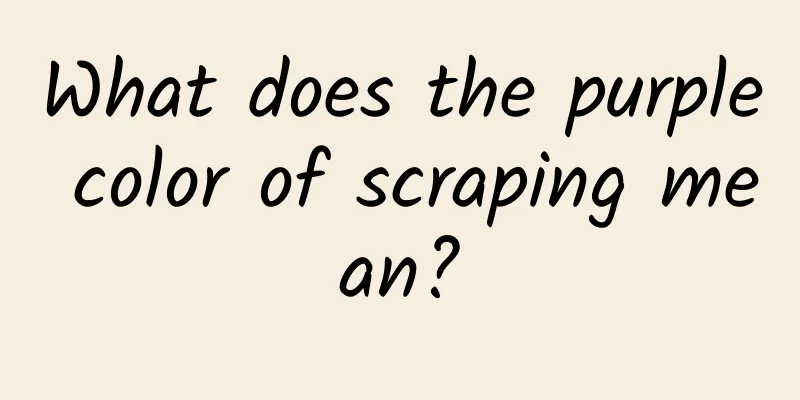Cervical vertebra reduction technique

|
In daily life, if some bad habits may cause the cervical spine to be dislocated, it will have a great impact on people's health. The cervical spine can be repositioned under the treatment of a professional doctor. Such treatment must be carried out in a regular hospital and find a professional doctor to avoid greater impact due to poor repositioning. This requires relatively high standards from the doctor. Cervical vertebra reduction technique 1. Supine angulated fixed-point reduction method (I) Personnel: Only one person is needed, no assistant is needed (II) Advantages: 1. The patient lies flat on his back, feels calm and safe; 2. The neck extensors and flexors are completely relaxed. (When sitting, some muscles cannot be completely relaxed) 3. Due to the limitation of the bed surface, the maximum rotation angle will not exceed 45', which is not easy to lose control and cause iatrogenic injury. (III) Procedure: Manual traction - angular adjustment - rotational reduction 1. Manual traction method: Use both hands and the jaw to pull on the pillow for several minutes. (Use the patient's body weight as counter-traction) Purpose: (1) The cervical muscles are striated muscles (voluntary muscles), which are characterized by being able to be controlled and contracted freely, but are prone to fatigue. The purpose of continuous manual traction is to fatigue the cervical muscles, eliminate pathological spasms, make them lose resistance, and facilitate cervical vertebrae reduction. (2) Continuous traction keeps the muscles on both sides of the neck in a balanced passive stretching state. The vertebrae of the entire cervical spine are protected and fixed as if by a "muscle splint". The small joints are in a locked and stable state and will not be displaced arbitrarily due to the reduction technique. 2. Angulation adjustment: Angulation: Upper section (C1-2): slightly lower the head (0-15 degrees) Middle section (C3-5): mild neck flexion (15-35 degrees) (3) Lower section (C6_7): moderate neck flexion (35-50 degrees) 3. Repositioning technique: Ask the patient to gently and automatically turn his head sideways to the maximum extent. The operator holds the occipital area with the palm of one hand and gently positions the thumb on the transverse process of the affected vertebra (do not press or push hard!). With the other hand, the operator supports the mandible and coordinates the degree of neck flexion with both hands to make an angle at the affected vertebra (the force fulcrum will be felt under the fingers). The operator then continues to apply light force to one side, rotates it abruptly, and gently pulls it upward and backward. You can hear a "click" sound (at the same time, you can feel the joint sliding into place under the thumb), and the reduction is successful. The remaining affected vertebrae can be repositioned and corrected one by one using the same method. (IV)Mechanism: 1. Due to lowering the head or flexing the neck, the corresponding cervical vertebrae segments are bent into angles, the neck muscles in this area relax and lose their stretching force, and the corresponding vertebral bodies temporarily lose protection and are in an unstable state, creating conditions for manual reduction of this area. (Other vertebrae that do not need reduction are still under traction protection and remain in a stable state). 2. The position of the corner point is determined by the height of the affected vertebra and the degree of bowing and flexing the neck (one higher vertebra is better than another, and the degree of neck flexion is smaller than another). The doctor can flexibly adjust the selection according to needs. |
<<: Where is the cervical spine located?
>>: What to do if you have cervical pain during pregnancy
Recommend
How to treat white mouth sores, try this method
The treatment of white mouth sores needs to be ta...
Why do breasts itch sometimes?
Women should know that the skin on their breasts ...
The discharge is water-like and has no odor
Some women may find that their vaginal secretions...
Women, stop eating this or you may get dysmenorrhea
Dysmenorrhea is not unfamiliar to women. Many peo...
What causes myocardial infarction? Causes of Myocardial Infarction
The reason why many people suffer from myocardial...
What medicine should I take for a sore throat?
A cold often leads to some symptoms, sometimes ca...
Acute renal failure
There are many common types of diseases. When tre...
Daily 12-hour health maintenance method
In traditional Chinese medicine theory, not only ...
Why does the baby move so much during pregnancy?
Many women will experience a situation during pre...
Reasons for high astalt
High astalt mainly refers to high alanine aminotr...
What to eat for dermatomyositis
The disease of dermatomyositis has many effects o...
What may be the causes of yellow urine?
Yellow urine with an odor is common in many peopl...
I have some pain in my left chest after exercise for two days.
Many studies have shown that physical exercise is...
Can a cracked nipple heal on its own?
Breasts are a very important part of a woman'...
Calcium supplementation for children
Children grow and develop relatively quickly, and...









